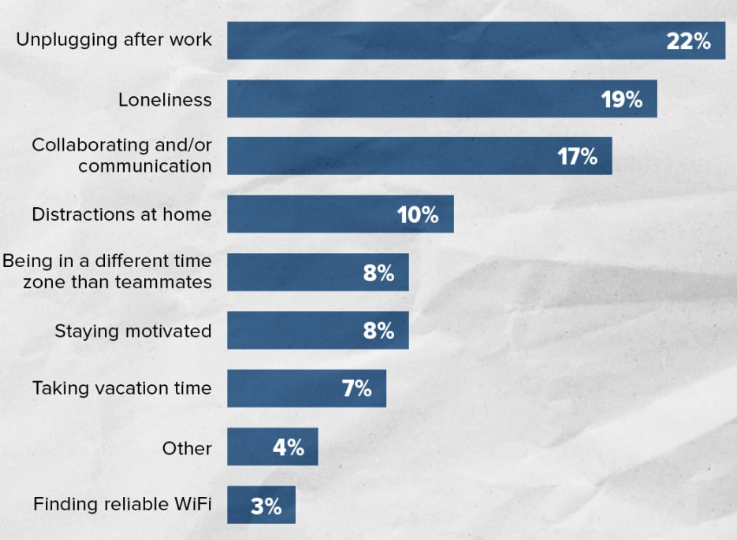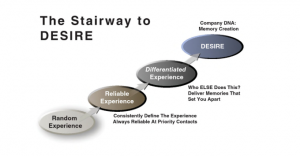Behind all successful businesses is the maintenance and strengthening of productivity. This can be measured via employee output and system operations. In short, the more productive a team is, the more cost-effective they become as an asset and the more profitable a company should become.
In light of the pandemic, employee morale has taken a whack, operations have been disturbed and productivity has taken the brunt of the effects for most businesses. As more companies make survival their goal – one of the best ways to survive any turbulent period is to boost productivity – both within the office and the remote work environment.
Biggest obstacles when working from home

(Biggest struggles when working from home 2020. Image: SHRM)
With ample tools and emerging technology at every startups’ disposal, the shining star leading the way to cost-effective operations, employee training, user experience, and productivity-boosting, is virtual reality. Startups are in a unique position to build their enterprise from the ground up on technological advancements. Many of which, including VR, will save costs and improve efficiencies. The best news; its applications are endless.
What is Virtual Reality
The simplest definition of virtual reality is an artificial digital environment that completely replaces the real world. Users can immerse themselves and interact with digital objects in these 3D environments, as well as meet up with and collaborate with others. Virtual reality is delivered through VR headsets used to immerse the user, there are two main types – each offering a different level of immersion.
PC-connected headsets are connected to a computer that generates the digital content for the user’s virtual experience. Vast computer processing powers make this possible. In addition to this headset, special controllers and unique hardware like sensor gloves can add an additional level of interactivity to the experience.
Alternatively, standalone VR headsets are relatively inexpensive and do not require computer processing powers. Rather, the standalone VR headsets enable the user to simply insert their mobile phones into the headset to experience VR.
Needless to say, the power of virtual reality in boosting productivity is vast. From minimizing costs associated with travel and time, to training employees remotely without exhausting company resources, productive boosts can be found with virtual reality. Here’s how.
1. Training
VR can be used for on-the-job training for thousands of employees at a time. It’s a great way to transfer skills and knowledge to employees without the need to be present on site. Keeping up with the necessary training will help employees to retain their knowledge and set them up for new challenges in the workplace.
An immersive experience has the capacity to instill more information into employees than textbooks and one-to-one mentoring. For example, Walmart implemented a VR training session in 2017 and currently holds training sessions for 140,000 of its employees using VR each year. It might be costly for some startups, but the training sessions can be used again and again, making the long-term returns highly valuable.
2. Smart recruitment
As every organization competes for the best talent, startups should aim to boost productivity by getting their hands on the best of what the talent pool has to offer. VR has become increasingly popular with recruitment agencies that recruit for a large number of candidates in a short period of time.
VR interviews and selection processes is cost-effective and precise when it comes to assessing candidates’ skills. VR opens the door to virtual meeting rooms and interview spaces, whilst providing scope for gamification and skills testing in a virtual environment – this could be within a digital version of the workspace.
Candidates can show their skills and communicate with hiring managers, and interviewers can assess the candidate’s aptitude and job expertise. The 3D environment imitates a real one and helps businesses recruit the best talent a lot faster, using far fewer real-life resources. With the best talent on board, productivity shouldn’t be an issue.
3. Remote collaboration
Particularly key to the work from home era, employees find a natural burst of productivity when they can bounce ideas between themselves, collaborate on products, and feel a sense of belonging within a team. AR offers virtual meeting spaces for discussions and ideas, as well as access for hundreds of employees to access data simultaneously – as if they were all in the same room.
Startups, often looking for the most cost-effective suppliers, manufacturers and distributors will have to be in contact with people dispersed all over the world. Remote collaboration using VR long surpasses the ease at which video conferencing and phone calls can provide effective communication. Bring together a team from all over the world in one 3D virtual space to work on product designs, prices, marketing strategies, and more.
Unlike Zoom, Skype, and messaging, VR offers more space to watch and assess a user’s body language. This is of particular use when it comes to negotiations and when sellers are trying to learn their prospects more carefully. With that said, VR allows startups to work together face-to-face and collaborate as productively as they would in reality.
4. Error-free design solutions
Product demonstration amongst all key stakeholders including prospective customers is only worthwhile if the product is right. VR is an important tool for product design, development and testing. Using VR technology, businesses can make 3D models, amend them, rotate them and make changes as they go along to achieve optimal design and performance. The best part is, no real-life and costly resources are wasted and time is saved on the manufacturing and rebuilding process.
In turn, quality assistants can make sure that the product has no flaws or imperfections before it goes into production. Software tools such as CAD enable designers and engineers to save costs by producing one-off perfect products. At the same time, VR is useful in terms of accessibility since multiple people from different teams can be involved in the product.
Boost productivity further by incorporating the marketing team and even prospective customers into the product design process. Get critical feedback from consumers before the production process to be sure that the product you’re releasing is in demand. The investment in VR is sure to pay for itself when you get the go-ahead from customers.
Business & Finance Articles on Business 2 Community
(60)
Report Post





